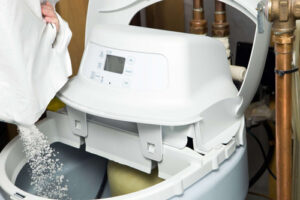
What is PFAS?
Chemicals classified as PFAS, or per- and poly-fluoroalkyl substances, are the main ingredient in AFFF fire-fighting foam that was used at airports and military bases before the US government phased-out their use. These chemicals, though now outlawed, are still showing up in Maryland (at a creek in Gambrills), West Virginia (along the south branch of the Potomac River) and Pennsylvania (at two sites along the Susquehanna River). PFAS are dangerous when they make it into our drinking water, having been linked to serious health problems that include cancer, childhood development issues, liver disease, and asthma. Experts have expressed concern that previous use of AFFF fire-fighting foams at military bases and airports may have actually contaminated the six-state Chesapeake Bay watershed, posing dangers to residents who depend on it for drinking water.
PFASs are also found in the air, soil and water. Historically, they have been used in non-stick cookware, water-repellent clothing, stain resistant fabrics and carpets, some cosmetics, and products that resist grease, water and oil.
PFAS do not biodegrade. The chemicals don’t break down in the environment or the body, and internally they stick to our blood. That means, once the contaminant is created it doesn’t go away. PFAS can be removed from water but are always a part of the environment.
Recent studies have even shown negative effects when PFAS collect in the human body. In addition to the health affects mentioned above, PFAS may:
- lower a woman’s chance of getting pregnant
- interfere with the body’s natural hormones
- increase cholesterol levels
- affect the immune system
For more information about PFAS, download the Fact Sheet published by the Agency for Toxic Substances and Disease Registry.
PFAS Contamination
Water contamination is nothing new, but the presence of PFASs in water sources has become a recent top story. PFAS contamination is documented at 94 sites in 22 states and in the tap water of up to 16 million people in 33 states, according to the EPA. With this level of documented pollution you might question the federal guidelines for PFAS use. There are, in fact, guidelines but no new legal limits for drinking water have been made in over two decades. The EPA, a federal governmental agency, has set drinking water levels for PFOA and PFOS of 70 parts per trillion but there are no guidelines for the other PFASs. The most widely made forms of PFAS in the United States are PFOA and PFOS.
The EPA recently required drinking water utilities across the country to test for six different PFC (polyfluoroalkyl chemical) chemicals. You can learn more by visiting the EPA website.
The Environmental Working Group (EWG) recommends a more stringent health guideline of 1 part per trillion for each PFC detected in drinking water based on studies of PFOA and PFOS and the chemical and toxicological similarity of many PFC chemicals. It has identified 43 states, with heavy concentration on the eastern part of the country, with PFAS contamination.
Source: EWG
There is a need to designate PFASs as hazardous substances and accelerate clean up. Of note, the topic of PFAS and proposed legislation by Congress is under review at the time of publishing this post. We hope to follow up in the next few months with information about amendments that will begin to improve PFAS contamination across the U.S.
What Can I Do?
If you live in an area with known PFAS contamination, now is the time to act! The best course of action for your home is to start with filtered water. Therefore, if you are unsure about your water quality, have your water tested.
Once you know what’s in your water, there are several choices for filtration. There are many options—from a water cooler, reverse osmosis to whole house filtration. Choices about where you want filtered water come into play when deciding on the type of system. Consider if you are you concerned about drinking water, water used to brush your teeth, or more when choosing a system for water treatment.
All the options are available with the proper filtration for PFASs. However, with each option, maintenance is fundamental to retain the proper effectiveness.
Get started today by contacting the water treatment experts at Hague Quality Water of Maryland at (410) 757-2992.
Resources:
• ATSDR
• Clean Water Action
• EPA
• EWG




